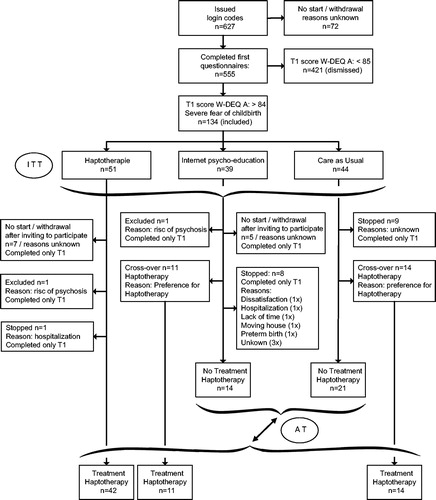Figures & data
Table 1. Baseline Characteristics and Measurements.
Figure 2. Means of fear of childbirth (W-DEQ score) across four measurement occasions. T1: 20–24 weeks of gestation, T2: 36 weeks of gestation, T3: 6 weeks postpartum, and T4: 6 months postpartum. (a) Intention to treat analysis (ITT). 1: Haptotherapy (HT), 2: Psycho-education via the Internet (INT), 3: Care as usual (CAU), 4: Cut off score 85. (b) As treated analysis (AT). A: Haptotherapy including Cross-overs (HT + CRO), B: Combined no-HT groups (INT + CAU), C: Cut off score 85.

Table 2. Results of multiple regressions using AT analyzes with FOC and social support at T1 and the intervention as predictors, and the 4DSQ-scale T1–T2 change scores as dependent variables.

